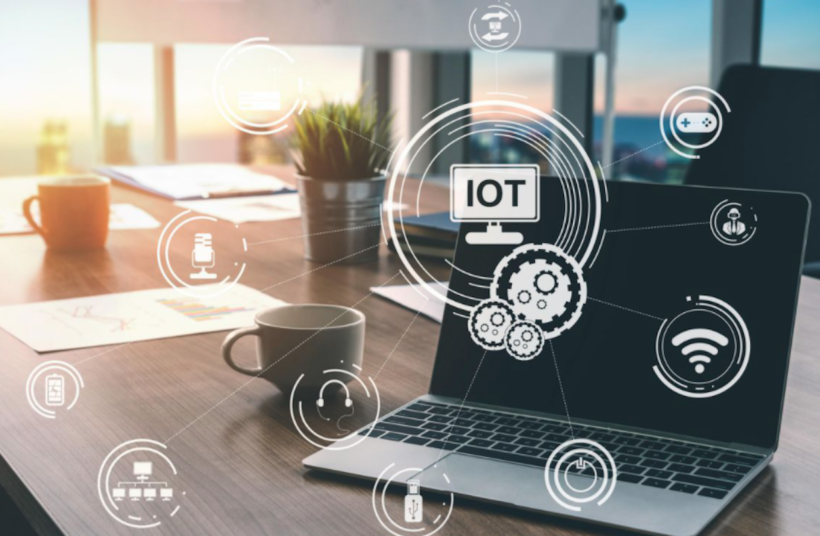IoT, also known as the Internet of Things, refers to inter-related computing devices that are provided with a unique identifier and which can transfer data to other devices over a network, without human intervention. IoT is slowly gaining ground in the day-to-day activities of humans. Smart devices are currently extensively used in making smart homes, connected cars, smart cities, medical aids, and many more things.
Though IoT can store large amounts of data and is considered to be an important tool in various activities and businesses like construction and infrastructure, and industrial machines, it is also susceptible to a wide range of cybercrimes like large-scale hacking. However, with considerable technological advancement, the future of IoT security is also being strengthened parallel to its utility.
The Future of IoT and its Usefulness
It is imperative to uncover the utility of IoT and the spheres in which it is used in order to understand how threats to IoT security can affect average people. If IoT is to become an important part of human life, its utility lies in its application to day-to-day actions. In this regard, IoT has come a long way in being used to make life easier in the form of smart homes and smart cars.
Smart homes are the future of accommodation, and IoTs are the harbingers of it. With just a tap, people could regulate the house temperature, regulate lighting and customize electricity consumption, thus promoting a more economical way of accommodation. Smart cars will optimize the driving experience by being a connected part of people’s lives while also promoting a safe and responsible driving environment in the form of sensors and alerts, and diagnostics that will ensure all-around safety and a holistic experience.
Medical aids can store years’ worth of medical data that will help in remote monitoring of the patient’s condition, providing an opportunity for tailor-made strategies that can combat an illness based on the person’s routine and lifestyle. In short, IoT’s utility is evident in most spheres of human life!
Common IoT Security Threats
IoT security threats can be classified into various types. The three most common types are as follows-
- Botnets– A botnet is a network through which cyber criminals access various remote devices to extract personal information, online banking details and conduct activities like DDos and phishing. Cybercriminals often attack IoT devices that are connected to a number of laptops and other devices so that they can hack all of them at once.
- Data theft– Hackers can attack a vulnerable IoT sensor in order to infiltrate into multiple business enterprises at once. Therefore, IoT security issues can often cause theft of confidential or sensitive data in organizations.
- Advanced persistent threats- This is one of the most common and dangerous security issues in modern times where the hacker remains in the system and has access to the stored data but is often undetected. While, on one hand, through the use of IoT, large volumes of sensitive data are exchanged between organizations or services, hackers tend to access information through APT without the notice of the organizations.
The Future of IoT Security
The future of the usefulness and the unparalleled influence of IoT on humankind is pretty evident. However, IoTs are at considerable risk of cybercrimes and data leaks, making it somewhat of a double-edged sword. With the advent of IoT-run devices, our internet is slowly becoming the Internet of Everything. All the data, personal information, and analyses are subject to hacking at any given time.
However, along with the development of smart devices, optimizing security is also occupying a lot of our time and resources. Software Securities plans and programs as a key in developing the device are becoming more and more important. The software developers are constantly checking for bugs in their system and are gradually thinking of sending updates to fortify the system software from hacks.
Many new and advanced smart home security networks are being introduced to keep the delicate information of people having smart homes safe and secure. Because of the added stress on security and the somewhat absence of security updates and bug-fixing from the developers of the devices themselves, as of now, many accessory IoT security platforms have come into being. These guide the customers into securing their IoT devices and fortify their personal and customized data, that if stolen would make them vulnerable to exposure.
However, in order to really usher in a more secure, safe, and less intrusive interface of technology that has inbuilt mechanisms for tackling and preventing privacy breaches, software developers and security platforms are to pay attention to analysts who expose the weaknesses in the system. They must also strive towards data and cloud encryption, increased stress on the use of artificial intelligence for real-time security monitoring, growing focus on endpoints and security parameters and IoT visibility.
In Conclusion
To sum it up, the research around IoT security and the indispensability of IoT, in general, is the key to a more safe, secure, efficient, and futuristic environment of data interpretation and analysis that gives a more nuanced, customized, and accurate experience to customers.
Jesslyn Tan has graduated from London School of Arts with a degree in photography and when she returned to America, found herself unemployed for the longest time. Not letting the rejections get to her, she focused on branding himself as an individual, and after slowly building her portfolio and networking, she was able to start his career as a freelancer, work at his own schedule, and also pursue traveling, his other passion. She loves taking portraits of people and exploring the local cuisines of the places he visits.
